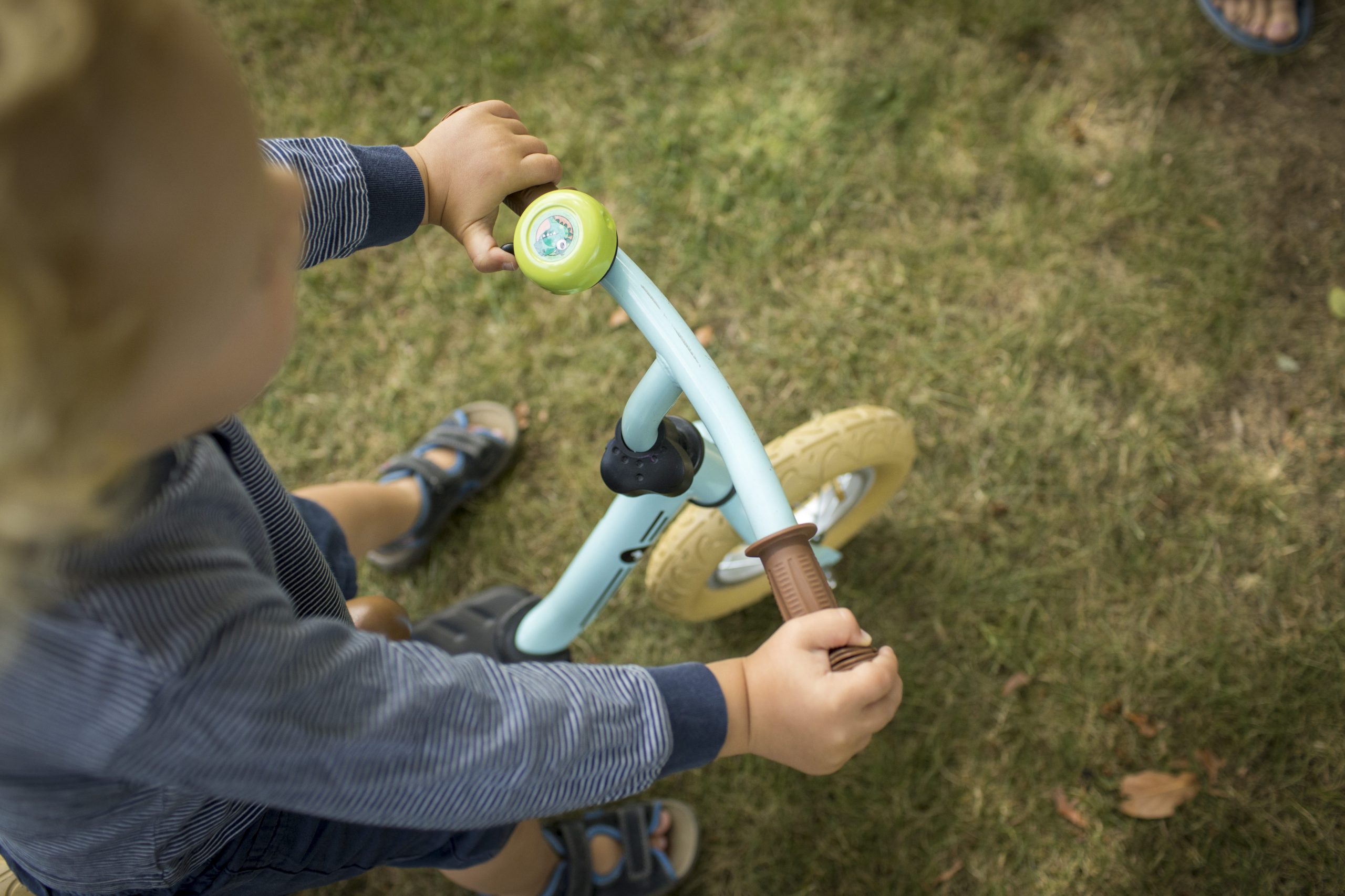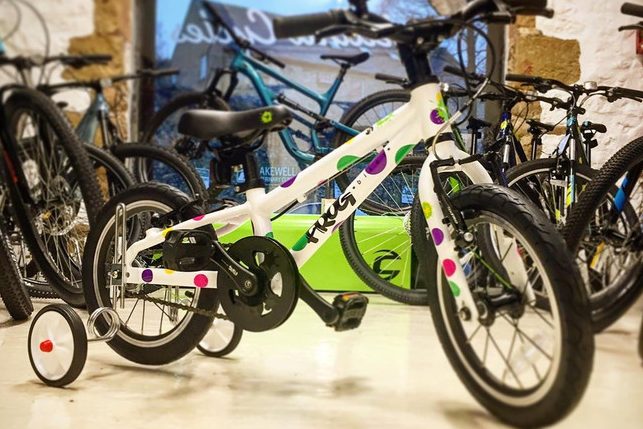Balance bike or stabilisers: what's the best way to teach your kids to ride?


There are pros and cons to both a balance bike or stabilisers, although nowadays all the emphasis is on balance bikes to teach a child to ride.
A balance bike doesn’t have pedals, but relies on a child pushing on the ground with their feet to get themselves moving. In a contrast to decades gone by, these are now by far the most popular sighting in parks among young riders.
You can still buy a kids' bike with stabilisers though. Fitted with two small wheels bolted onto the side of a bike’s frame at the rear that help hold it upright, it helps the child overcome worries with wobbling.
>>> How to teach your child to ride a bike in 45 minutes
They can usually be set at different heights so that as a child gets more assured in their riding they can be lifted up and the child balances more on the bike’s actual wheels.
Unlike a balance bike, a bike with stabilisers will have pedals too. Eventually, the stabilisers can be removed altogether and the bike can be ridden like a normal bike.
So what are the benefits of each type of bike?
>>> Family cycling: how to enjoy a bike ride with your kids
Balance or pedalling first?
There are a range of skills to master in learning how to ride a bike: balancing, pedalling, steering and braking. Whereas the emphasis with a bike with stabilisers is on learning to pedal, with a balance bike - as its name suggests - it’s on learning to balance the bike with pedalling following later.

When you’re riding a normal bike, a large part of the skill required is keeping the bike upright and leaning into corners, something that a kid can’t learn on a bike with stabilisers, as the extra side wheels are designed to keep the bike upright. That means that when turning, they have to lean out of the corner rather than leaning into it, to keep the bike upright.
>>> Eight ways your cycling changes when you have kids
That’s something that has to then be unlearned once they start to ride a bike without stabilisers - a nod in the direction of saying that stabilisers aren't the smartest of options.In theory, the transition to a standard bike will be smoother if they have learned to ride on a balance bike first.
On a balance bike, that knack of leaning into turns and keeping the bike upright is learned first and transfers directly to a bike with pedals.A child can start to learn to ride a balance bike from 18 months - so just a few months after they've probably managed their first steps.
At that age, the child’s centre of gravity is lower and because they have both feet on the ground they are less likely to fall than on a larger bike with stabilisers. There’s a natural progression from walking on a balance bike to scooting then gliding as their confidence increases. A balance bike, unlike a bike with stabilisers, can be ridden easily on uneven ground, too.
There’s also the option to remove pedals from a bike sized for a larger child and use that as a balance bike if your child is too tall for a balance bike when they start to learn to ride. It's even an option for adults.
Stabilisers still have their place
There’s still a place for learning to ride with stabilisers though.A bike that comes with stabilisers will last a child longer than a balance bike, making it a cheaper option than replacing a balance bike after a year or so.
It’s a good way to learn to pedal without you needing to hold the bike upright. That’s particularly useful if you live on a quiet flat street where children can ride up and down without too much supervision.

You need to be careful with raising stabilisers though. When turning, it’s easy to ground a stabiliser that’s not been in contact with the tarmac, increasing the risk of the bike actually becoming less stable, pivoting around the stabiliser and falling.
>>> How did you learn to ride a bike? Your funny real-life stories
Falling is more of a risk once the stabilisers are removed completely, as a child who has learned to pedal a bike with them may not have learned to balance. They may be older by this time too and taller, making balancing more difficult.
Above all be patient and let your child learn at their own pace. There’s no typical age when a child will get the hang of riding their bike; it might be anything from two to nine years old.

Thank you for reading 20 articles this month* Join now for unlimited access
Enjoy your first month for just £1 / $1 / €1
*Read 5 free articles per month without a subscription

Join now for unlimited access
Try first month for just £1 / $1 / €1
Get The Leadout Newsletter
The latest race content, interviews, features, reviews and expert buying guides, direct to your inbox!
Paul started writing for Cycling Weekly in 2015, covering cycling tech, new bikes and product testing. Since then, he’s reviewed hundreds of bikes and thousands of other pieces of cycling equipment for the magazine and the Cycling Weekly website.
He’s been cycling for a lot longer than that though and his travels by bike have taken him all around Europe and to California. He’s been riding gravel since before gravel bikes existed too, riding a cyclocross bike through the Chilterns and along the South Downs.
-
 'I'll take a top 10, that's alright in the end' - Fred Wright finishes best of British at Paris-Roubaix
'I'll take a top 10, that's alright in the end' - Fred Wright finishes best of British at Paris-RoubaixBahrain-Victorious rider came back from a mechanical on the Arenberg to place ninth
By Adam Becket Published
-
 'This is the furthest ride I've actually ever done' - Matthew Brennan lights up Paris-Roubaix at 19 years old
'This is the furthest ride I've actually ever done' - Matthew Brennan lights up Paris-Roubaix at 19 years oldThe day's youngest rider reflects on 'killer' Monument debut
By Tom Davidson Published